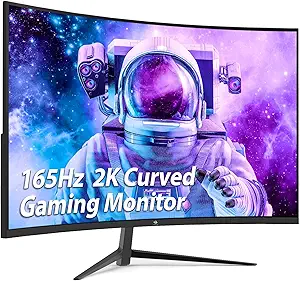In the world of gaming, your choice of equipment can mean the difference between victory and defeat. Among all gaming peripherals, the gaming monitor is one of the most crucial components. It acts as your gateway to the virtual world, delivering the graphics, responsiveness, and you need to dominate your favorite games. Here’s everything you need to know about gaming monitors and how to select the best one for your setup.
1. Why Gaming Monitors Matter
A gaming monitor isn’t just a regular screen; it’s designed with features that cater specifically to gamers. These features enhance visual clarity, reduce input lag, and offer smoother gameplay. Whether you’re exploring sprawling open-world games or engaging in fast-paced competitive matches, a high-quality gaming monitor ensures you stay ahead of the curve.
2. Key Features to Look For in a Gaming Monitor
When shopping for a gaming monitor, consider the following:
a) Refresh Rate
The refresh rate, measured in Hertz (Hz), determines how many frames your monitor can display per second. A higher refresh rate like 144Hz or 240Hz is essential for competitive gamers as it provides smoother visuals and a significant edge in fast-paced games.
b) Response Time
Measured in milliseconds (ms), response time refers to how quickly a monitor can transition pixels. Lower response times (1ms or 2ms) reduce motion blur, ensuring clear visuals during intense action.
c) Resolution
The resolution defines the clarity of your gaming display. Monitors come in various resolutions like:
- 1080p (Full HD): Ideal for budget setups.
- 1440p (Quad HD): Offers a sweet spot for performance and visuals.
- 4K (Ultra HD): Perfect for gamers seeking top-tier visuals.
d) Panel Type
Different panel types cater to different gaming needs:
- TN Panels: Great for fast response times and budget-friendly options.
- IPS Panels: Superior color accuracy and viewing angles, ideal for gaming.
- VA Panels: Balanced performance with excellent contrast ratios.
e) Adaptive Sync Technology
Look for technologies like NVIDIA G-Sync or AMD FreeSync, which eliminate screen tearing and stuttering by syncing your monitor’s refresh rate with your graphics card.
3. Size and Aspect Ratio: What’s Right for You?
- Size: The most popular gaming monitor sizes range from 24 to 32 inches. A 24-inch monitor is perfect for competitive gaming, while larger screens enhance in single-player titles.
- Aspect Ratio: Standard monitors come in a 16:9 aspect ratio, but ultra-wide monitors with a 21:9 ratio are gaining popularity for their panoramic views, especially in racing and simulation games.
4. Curved vs. Flat Monitors
Curved gaming monitors provide a more experience by wrapping the display around your field of vision. While they’re excellent for RPGs and simulation games, flat monitors are better for competitive gaming due to reduced distortion.
5. Budget Considerations
Gaming monitors come in a wide price range. Here’s a quick guide to help you decide:
- Entry-Level (Under $200): Basic features, 1080p resolution, and 60Hz refresh rate.
- Mid-Range ($200–$500): 144Hz refresh rates, 1440p resolution, and adaptive sync technology.
- High-End (Above $500): 4K resolution, 240Hz refresh rates, and premium features like HDR and ultra-wide screens.
6. Popular Gaming Monitor Brands
Some trusted brands in the gaming monitor market include:
- ASUS (ROG series for high performance)
- Acer (Predator series for competitive gaming)
- BenQ (Zowie series for esports professionals)
- Samsung (Odyssey series for curved screens)
- LG (UltraGear series for vibrant visuals)
7. Maintaining Your Gaming Monitor
To ensure your monitor lasts, keep these tips in mind:
- Calibrate Regularly: Adjust brightness, contrast, and color settings for optimal performance.
- Clean Carefully: Use a microfiber cloth and screen-safe cleaning solution.
- Protect Your Investment: Use surge protectors to safeguard your monitor from electrical damage.

